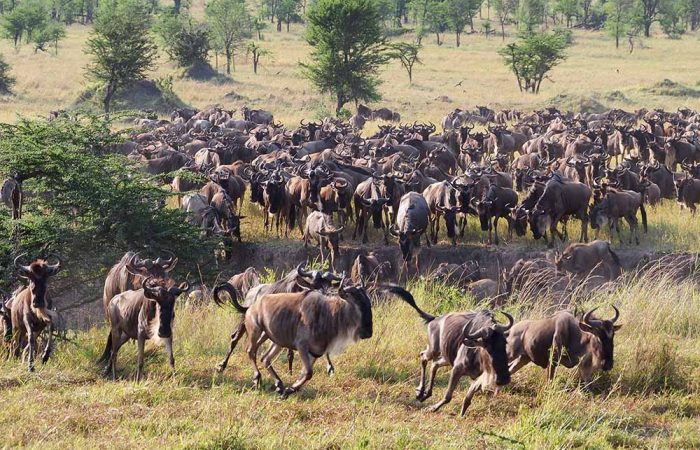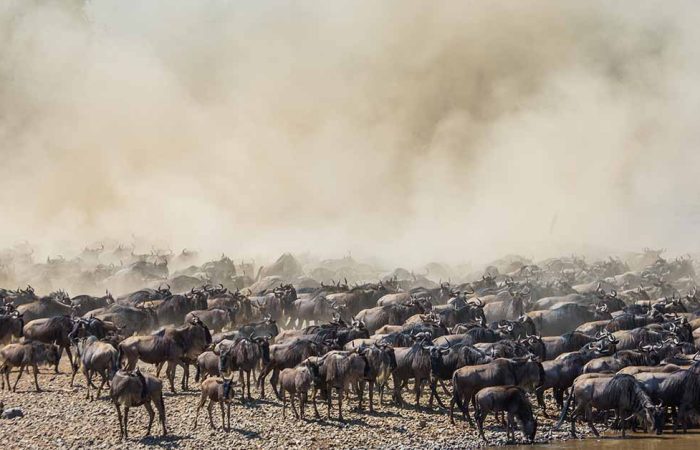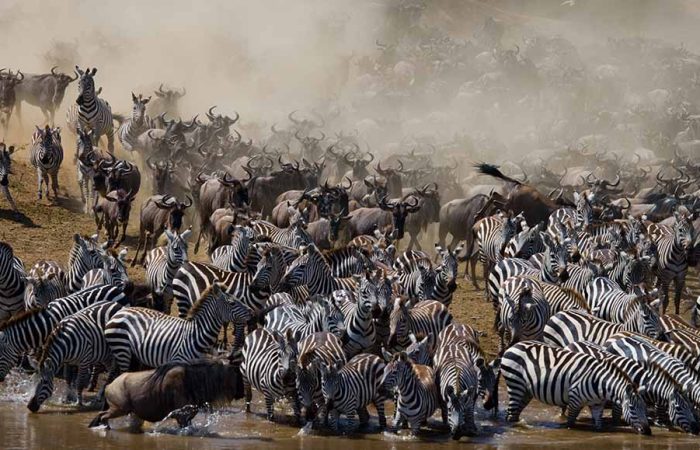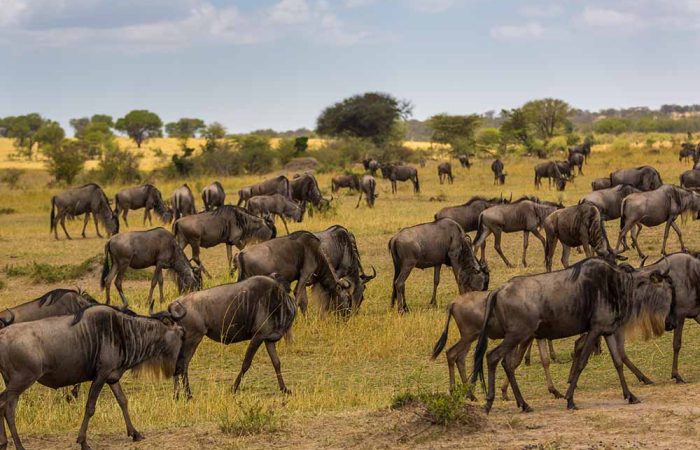One of the biggest attractions in Tanzania is the Great Migration in Serengeti National Park. Each year, this natural phenomenon draws tourists from all over the world to witness the colossal movement of animals across the Grumeti River. It is one of the reasons the Serengeti is a UNESCO World Heritage Site, as it is the largest migration of animals on the planet. The Great Migration occurs annually, even continually across the entire area of the Serengeti.
For a short period (approximately 2 months each year), herds of wildebeests and other ungulates are in Kenya. Usually, around July and August, they migrate there with an epic river crossing, risking crocodiles and other predators to return to the fresh grass of the Maasai Mara. Herds spend the remainder of the year in Tanzania, mostly in the Serengeti or the corner of Ngorongoro Conservation area. This is where they will mate, birth their young and enjoy the lush grasses of the Serengeti for approximately 10 months of the year.
here are different portions of the Great Migration available to witness throughout the year;
February is calving season, with thousands of baby wildebeests born each day! Witness the miracle of new life – and the wonder of the ability of a baby wildebeest to run shortly after birth during this time.
March and April mark when the herds begin to congregate in the Seronera area of Serengeti, offering some spectacular photo opportunities of massive numbers of animals, peacefully grazing in a beautiful setting.
In May, the herds begin to move northward, forming impressive columns of animals marching in sync, they may congregate at the Western Corridor as they find a safe place to cross the Grumeti River. In this way, visitors have a chance to see the high density of animals that move together for migration – a truly incredible aspect of nature to witness with your own eyes!
July through to early September visitors are likely to witness the amazing migration of animals and the adrenaline-pumping Mara River crossing. The animals rush through the dangerous waters, moving in massive numbers in hopes of reaching the other side. This is the stuff of National Geographic (who do regularly film this phenomenon), but the energy and power of nature is intimately felt when witnessing live, not watching through a television screen
You will leave with a renewed appreciation for Africa’s wildlife and raw aspects of nature that humanity has not interfered with. How incredible that this annual cycle has been occurring for probably a millennia, and we are still able to appreciate and witness it, even today!
There are two river crossings that occur during this yearly cycle of migration: the Mara River and the Grumeti River. The names are used to indicate the direction the animals are heading:
The Grumeti River crossing often occurs during May and June, as the herds enter Kenya.
The Mara River crossing is the movement of herds from Kenya back into Tanzania, and often happens during July and August.
As you can see, the Great Migration is an ongoing spectacle in Serengeti National Park. There is something to see and experience at nearly every time of the year. If the Great Migration of Serengeti is on your bucket-list to witness, this is certainly a chance to make your dream come true!






